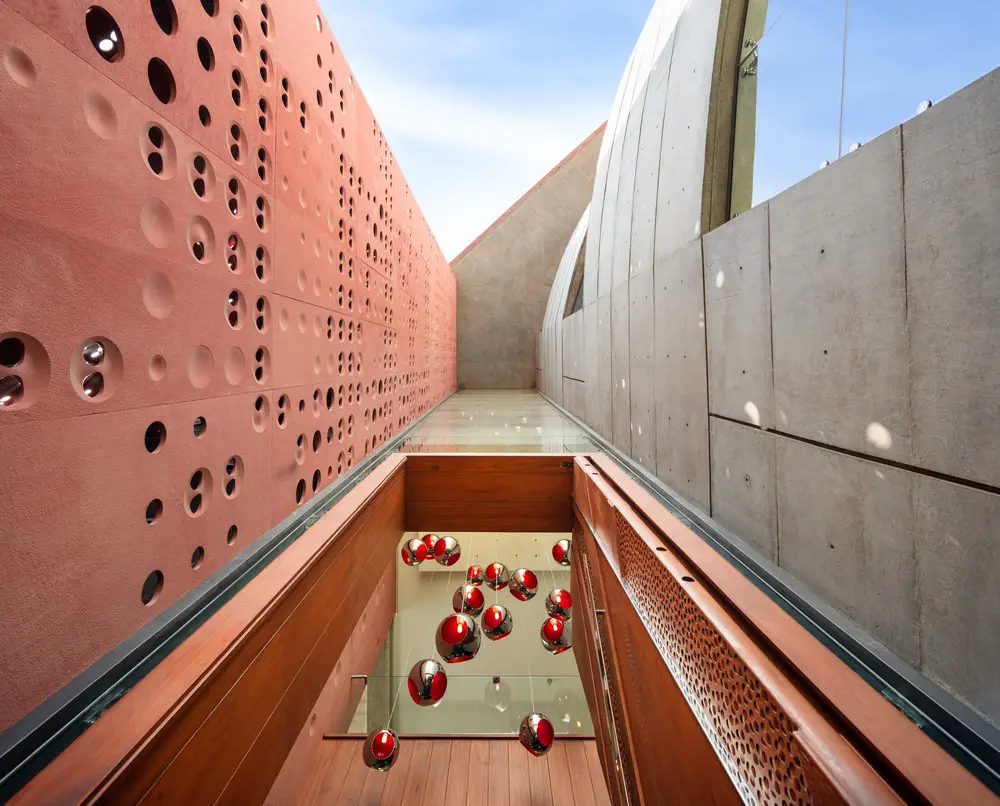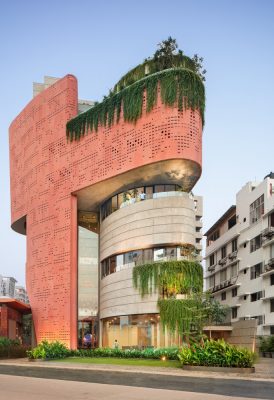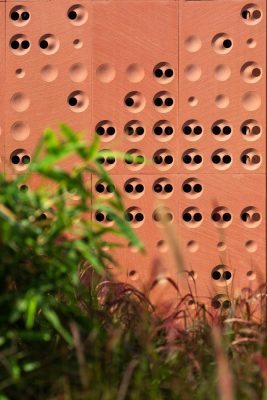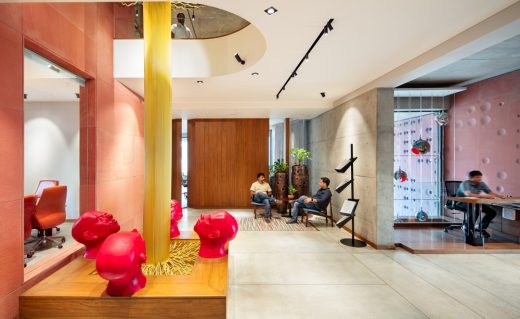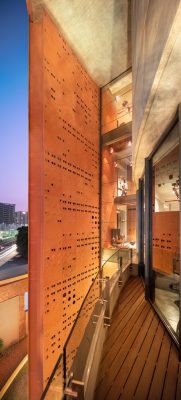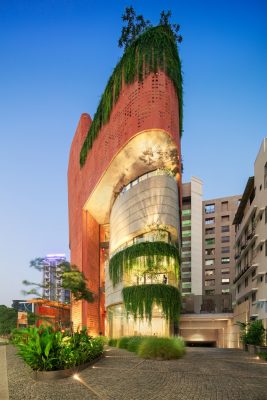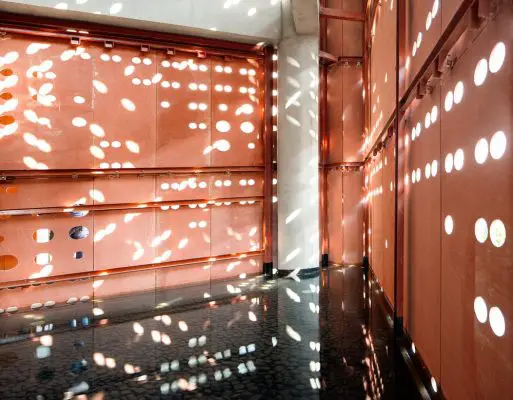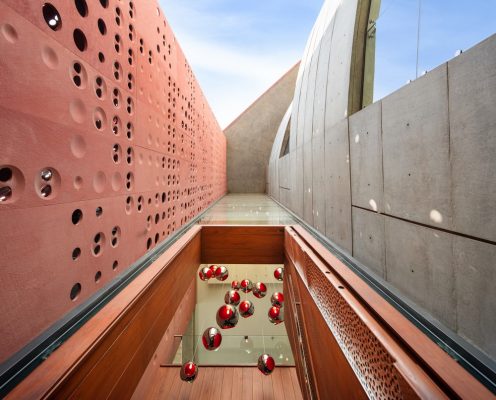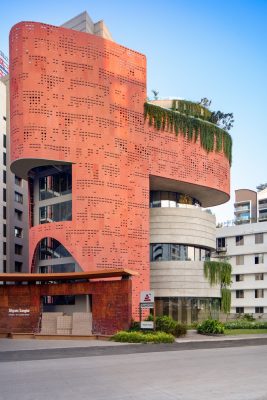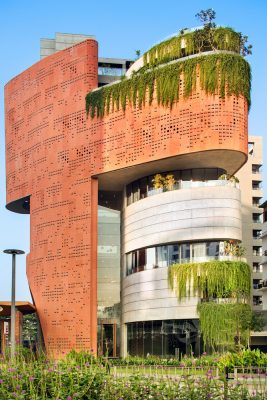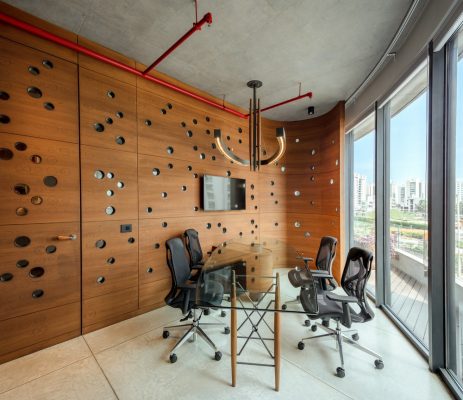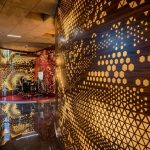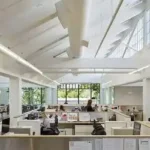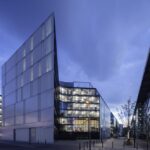Sangini House Gujarat Offices, Northwest Indian building development, New Surat architecture photos
Sangini House in Surat, Gujarat
post updated 22 June 2025
Design: Urbanscape Architects and Utopia Designs
Location: Surat, Gujarat, India
Photos by Noughts and Crosses LLP | Andre Fanthome
22 Oct 2020
Sangini House, Gujarat Offices Building
The architecture and design of explores ways in which it can respond to the context and spirit of the heritage in which it stands. This office building for the Sangini group characterizes new strategies for a flexible, column-free office space that creates a new urban venture in the city’s dense business district.
Established in 1984, the Sangini group is a leading construction firm delivering technical excellence in building design for habitats and commercial spaces. The site for their new office building is located at the Canal Road. The areas on the Vesu – Canal corridor area are redeveloped and the roads are newly constructed.
The scheme is envisioned as an upcoming real-estate epicentre providing a revived infrastructure and a healthy lifestyle for its inhabitants. Starting from their workplace, the Sangini House, the group aims to cast several residential and commercial buildings in the area. Having worked with Utopia Designs for over 12 years, on a number of projects, this was an opportunity to deliver uniqueness and innovation, for which collaboration was key.
Utopia Designs and Urbanscape Architects collaborated for architecture and conceptualised and designed interiors for the eight-storied office building. The project holds significance in urban, environmental and contextual terms – an upscale design that is inherited from brand’s values.
An irregular site with mandatory setbacks, offered the opportunity of a triangular footprint. Conceptualising the design as a sculptural manifestation, the initial design ideas were developed as a work of art that would challenge the archetypal structural systems and the notion of a building, while showcasing the ethos of the brand, capability and expertise in the developer domain. The design intent was to create a dynamic built volume that would encourage the visitor to come into the space and the building.
As a result, cantilevered floor plates that defy the conventional grid structure with post-tensioned sweeping floors have been cast along with exposed concrete walls that are structural in nature. Bearing in mind the cantilever’s scale, alternate floors have been intentionally connected with sheer walls; resulting in each floor acting as a single beam, with the functions shuffled accordingly. This exercise led to a column/wall free alternate floor.
The nature of the family business and the resultant hierarchy plays a crucial role in spatial planning and movement, in order to determine the connections and vertical segregation. The family-run business has excelled through the last four decades, making the terminology corporate ‘house’, extremely pertinent. Extending the home into the workspace, a personal, sensitive and conscious experience is created within the building through the hierarchy of spaces and their interconnectivity. A small floor plate results in its segregation from the vertical core that comprises two lifts and a staircase.
Guided by the building’s unusual design, distinctive profile and an appropriate orientation adopted through sun path analysis, the environmental strategy exploits the various factors to enable programmatic and functional success. The stone skin with three-dimensional perforations envelopes the core and provides shade from the harsh sunlight of the south and west throughout the day.
The skin wraps around on the fifth and sixth floor to unify the structure and create an inviting and invigorating volume of the five-floor high entrance. The entrance is where the private world of the tower meets the public realm and this soaring light-filled space tones down the scale, making it look proportionate to the floor plate. The voluptuous space of the eight stories structure transforms visibly into a five-storied structure, a warmer, more approachable and composed space, therefore, justifying the use of the word ‘House ‘and departing from the overtly used word ‘corporate’.
From the entrance, the visitor is directed along the sweeping skin into a double-height atrium which opens into a court. Daylight is drawn into the various office levels and down through the building via the atrium. The inclusion of ample daylight ensures a clarified and celebrated movement through the building, that provides a physical and psychological balance to the employees.
The interiors of Sangini House echo the character of the architectural design and intent of the building. Staying true to the spirit of heritage and context, the materials and finishes are kept raw and natural – devoid of any cosmetic layering. Most of the ceilings and walls are done in exposed concrete, with services such as electrical, air-conditioning, fire safety and fresh air left bare and exposed, offering an industrial feel to the spaces inside.
The flooring is fashioned in light grey micro concrete on most of the layers, with the entrance, elevator passages and staircases done in exquisite granite. The furniture and partitions are customized as per functional needs and the nature of work.
Adhering to the client’s brief of keeping the interior spaces subtle yet elegant and opulent, natural materials are used with creativity, originality and innovation; the materials include stone, reclaimed wood, metal, glass, ply and veneer, MDF, etc. Customized light fixtures and specially commissioned artworks add an impression of dynamism, colour, and energy to the spaces.
Other active means of energy systems in the building include rainwater harvesting and drip irrigation systems which are used to optimize water consumption, radiant floors and ventilation systems that cater to the cooling needs. Together with the highly efficient services equipment and systems in the building and the façade design that is integral to the energy strategy, the building aims to achieve a Platinum green rating.
The Sangini House stands as a testament to the brand’s values, designed in response to context, heritage, and functionality. A rather distinctively designed building, it is a new-age epitome of urban culture and environmental sensibility.
Sangini House, Gujarat – Building Information
Architecture Firm: Urbanscape Architects and Utopia Designs
Location: Surat, India
Typology: Commercial
Location: Surat, Gujarat
Name of Client: Adarsh Patel
Name of Client’s Firm: Sangini Group
Address: Sangini House, Canal Road, Vesu, Surat
Interior Design: Utopia Designs
Design Lead (Architecture): Dinesh Panwar and Apurva Desai
Design Team (Architecture): Vipul Nakrani, Urvakhsh Chichgar, Bhavin Swami, Dishant Patel and Suryaveer Patnaik, Mihir
Design Lead (Interiors): Urvakhsh Chichgar and Vipul Nakrani
Design Team (Interiors): Apurva Desai, Bhavin Swami, Dinesh Panwar, Unnati Patel, Riddhi
Site Area: 8,300 sq ft & 772 sqm
Built-Up Area: 26,749 sq ft & 2,486 sqm
Start Date: 1/2/2016
Completion Date: 31/3/2019
Photographer: Noughts and Crosses LLP | Andre Fanthome
Sangini House, Gujarat Officest images / information received 221020
Location: Surat, Gujarat, north west India
Gujarat Properties
Gujarat Houses – Selection
Bavlu Weekend House in Ahmedabad, Gujarat
Architecture: UJJVAL FADIA
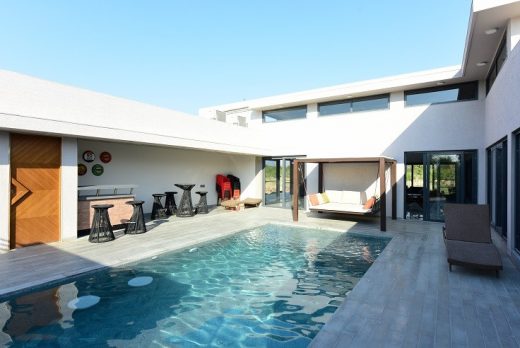
photograph : Subhash Patil
Verandah House in Ranchodpura, Ahmedabad
Architects: Arpan Shah Architect, Modo Design
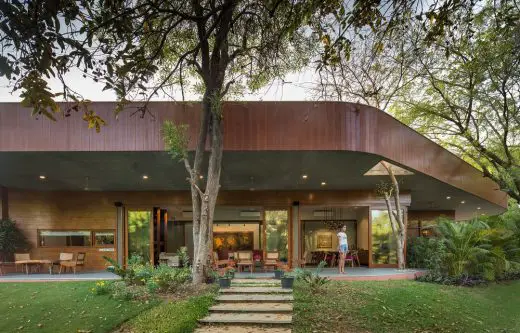
photo : Bharat Aggarwal
The House Of Secret Gardens in Ahmedabad
Architecture: SPASM Design
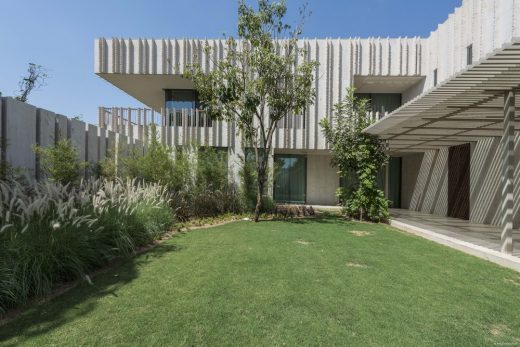
photography : Edmund Sumner, Umang Shah and Photographix – Sebastian Zachariah & Ira Gosalia
Indian Architecture
India Architecture Designs – chronological list
New Indian Architecture Designs – architectural selection below:
Hexalace Building in Punjab
Architects: Studio Ardete
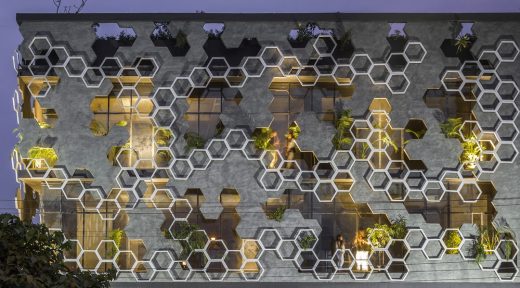
photograph : Ar.Purnesh Dev Nikhanj
The Street in Mathura
Design: Sanjay Puri Architects
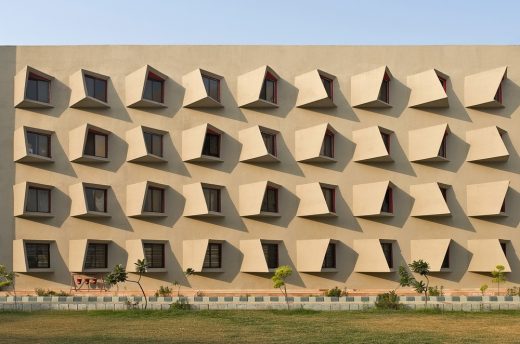
photo : Dinesh Mehta
Indian Architect : contact details
Comments / photos for the Sangini House in Surat, Gujarat office property design by Urbanscape Architects and Utopia Designs page welcome.

